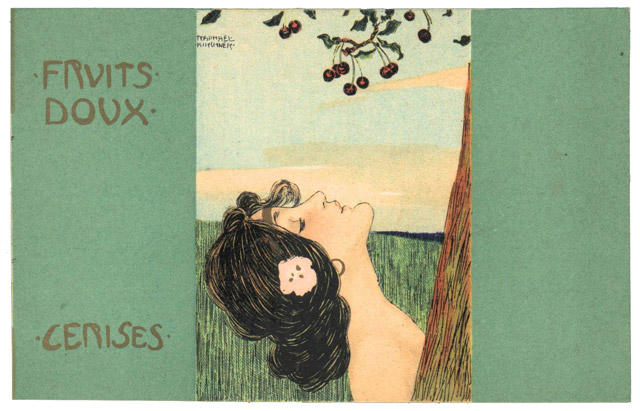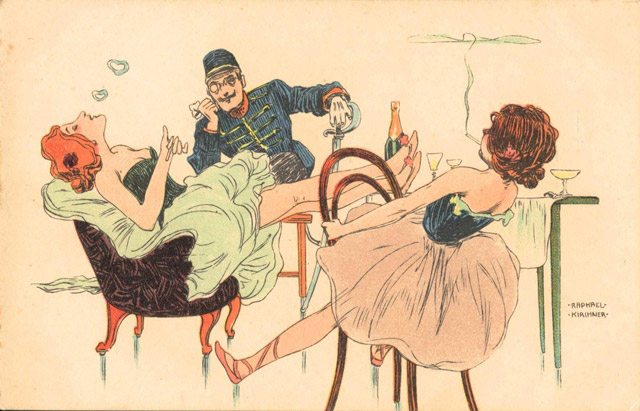Raphael Kirchner was one of the most famous illustrators of picture postcards at the turn of the 19th and early 20th century, and still is today. To date more than eight hundred postcards of diverse subjects designed by him have been discovered. In the three periods in which we have subdivided the whole production of Kirchner's postcards, we have also individuated homogeneous groups, separating, above all, the signed sets from those unsigned.
The Beginnings (1897-1899)
Kirchner's first works were published in Vienna, his native city. Our research leads us to believe that one of the first set published, in 1897, was the Wiener Typen set.


The Golden Age (1900-1907)
The main part of Kirchner's production was developed during the period which we have named the Golden Age and which includes the postcards published between 1900-1907, eventhough the majority of them were actually published before 1904.
After his move to Paris, Kirchner began to sign postcards with the addition of Paris around 1903. This was the most successful period for the sale of postcards he designed and sent to and from all over the world.

During this time many unsigned postcards were published in Kirchner's style. Some are attributed to our artist, based on our experience of over 40 years - and we have reported them in the book - while others are produced by imitators looking for commercial success. And still others are influenced by the closeness and friendship with Raphael, for example some postcards by Carl Jozsa.

In the Golden Age list we have also included a series that we believe is by Kirchner even though it bears
another signature. We are referring here to the only known set signed by Nini Hager,
maybe this was his wife's real name? We would like to underline that the attribution of this series to
Kirchner is based on the analysis of Kirchner's style. Instead, our recent research has shown that Max Raschka is a
very different author from Kirchner, as evidenced by his entire output.
The series "La guerre amusante"
and "The Christmas painted by Raschka" are very influenced by Kirchner's style.
The Glamour Age (1910-1916)
The work produced in this last period (1910-1916) is distinctly different from the previous period and is characterized by a pleasant erotic charge. It is no coincidence that Kirchner is mentioned as the father of the "Pin-up".
All are reproductions of images made for other types of graphics: for example, the famous French postcards printed by Librairie de l'Estampe reproduce, for the most part, the enchanting drawings with which Kirchner illustrated the book Le Bandeau by Felicien Champsaur, or other contemporary books; the English postcards of the Bruton Galleries reproduce many of the prints sold with great success in various formats at the Bruton Art Gallery in London and published as illustrated plates also in the magazine The Sketch.
Last but not least, the ten enchanting little American women Les Amours de Pierrot reproduce the panels that Kirchner himself designed to decorate the Century Theater in New York, using as models the same soubrettes who sang and danced in the theater, for the musical review of Florenz Ziegfeld.

Conclusions
Summarizing, for those who love numbers, of the postcards catalogued in our research, and the reported in our book at the time of printing, 131 different sets, totaling 831 postcards of various drawings, can be counted. About 600 of these are signed by Kirchner or can certainly be attributed to him. But, some sets comprise different types of printing: for example, for a Kirchner collector an orange Geisha is different to a green Geisha, even if the basic drawing is the same. Then, counting the postcards of a same set but of a different type the total rises to a good 994.



